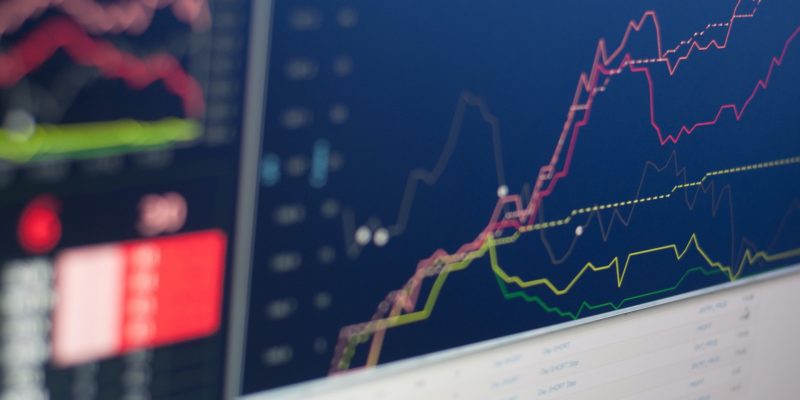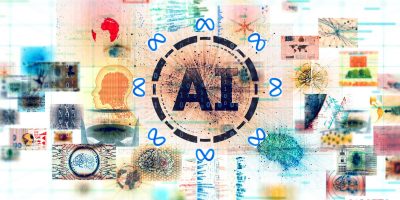In this digital age, the financial industry is undergoing a significant transformation with the rise of automated trading systems. These systems have revolutionized the way trading is conducted, replacing traditional manual methods with sophisticated algorithms and advanced technologies.
Overview of the Traditional Trading Landscape
For decades, trading in financial markets was predominantly a manual process that heavily depended on the experience and judgment of traders.
In a traditional trading environment, human expertise, intuition, and manual execution played a key role in buying and selling securities.
Traders made decisions based on market analysis, news, and their interpretations of various financial indicators. While this approach had its merits, it was not without its shortcomings.
One significant limitation of traditional trading was the susceptibility to human errors. Traders, regardless of their experience, could make mistakes due to factors like fatigue, emotional reactions, or misinterpretation of market information. These errors could result in financial losses, affecting both individual traders and the market as a whole.
Emergence of Automated Trading Systems
With technological advancements, automated trading systems have emerged as a game-changer in the financial industry, ushering in a new era of trading efficiency and precision. These systems leverage cutting-edge technology, employing complex algorithms and computer programs to execute trades automatically, which represents a seismic shift from traditional, manual trading methods. The advent of these automated systems marks a significant milestone as it effectively eliminates the need for direct human intervention in every trade.
These systems can analyze vast volumes of market data, identify trading opportunities, and execute trades within milliseconds, outperforming human traders in terms of swiftness and precision. They are designed to make split-second decisions based on predefined rules and algorithms, providing a level of efficiency and consistency that was previously unattainable through manual trading.
These systems reduce human errors, which often stem from emotions, fatigue, or simple oversight. Automated trading systems are not influenced by emotions, ensuring that each trade is executed without hesitation and in strict adherence to predefined strategies. This results in minimized costly mistakes and greater overall trading accuracy.
Automated systems offer real-time data-driven decision-making capabilities. They can process and interpret an immense amount of market information, providing traders with valuable insights to optimize their strategies. By instantly analyzing market conditions, automated trading systems can identify favorable entry and exit points, resulting in more informed and profitable trading decisions.
Evolution of Trading from Manual to Automated
The need for increased efficiency, speed, and accuracy in the trading process has driven the shift toward automated trading systems. Traders now have access to advanced tools and platforms that enable them to execute trades with lightning-fast speed and precision.
Types of Automated Trading Systems
Automated trading systems encompass various sophisticated methodologies that empower traders and investors with diverse approaches to navigate the financial markets efficiently. These systems are tailored to cater to specific trading styles and objectives.
Quantitative Trading: Employs mathematical models, statistical analyses, and quantitative techniques to inform trading decisions. These strategies scrutinize historical data, identify patterns, and use statistical calculations to assess market conditions. Quantitative trading offers systematic and data-driven approaches to gain a deeper understanding of the markets. For example – TradingView platform facilitates quantitative trading strategies by providing an ideal environment for traders to apply mathematical models and statistical analyses effectively. It offers a versatile and comprehensive toolset to support their quantitative trading endeavors.
Algorithmic trading: often referred to as algo-trading, relies on pre-programmed algorithms and trading strategies to execute a high volume of trades automatically. These algorithms are designed to analyze market data and swiftly identify profitable opportunities based on predefined criteria. Algorithmic trading is renowned for its ability to minimize human involvement and emotions, enhancing trading precision.
High-Frequency Trading (HFT): represents a subcategory of algorithmic trading that specializes in executing a vast number of trades within mere milliseconds. HFT strategies aim to capitalize on minuscule price discrepancies and fleeting market inefficiencies. This breakneck trading style necessitates advanced technology and powerful computer systems to maintain a competitive edge.
Machine Learning and AI-driven Trading: These systems harness artificial intelligence and machine learning algorithms to adapt and evolve with changing market conditions. By continuously analyzing vast datasets and learning from market dynamics, these trading systems can predict price movements and optimize trading strategies. They have the potential to make informed, data-driven decisions in real time, making them highly advanced and versatile tools for traders.
Challenges and Risks
The complexities of automated trading systems require vigilant monitoring and maintenance to prevent technical glitches and system failures. Such disruptions can result in significant financial losses, underscoring the importance of a robust risk management framework.
Regulatory concerns are another critical aspect, as compliance with financial regulations is essential. Failing to adhere to regulatory standards can lead to legal issues and financial penalties.
The risk of market manipulation looms over automated trading systems. The use of algorithms and high-frequency trading strategies can inadvertently affect market dynamics, raising concerns about fair and transparent trading.
There is the peril of overreliance on technology, which can lead to a lack of human oversight and decision-making. Striking the right balance between automation and human intervention is essential to mitigate risks effectively in the automated trading landscape. Traders must remain vigilant and proactive in addressing these challenges to harness the full potential of automated trading systems while safeguarding against potential pitfalls.
Conclusion
The financial industry is experiencing a transformative shift towards automated trading systems. These systems replace manual trading with advanced technology, offering numerous advantages over traditional methods.
Traditional trading relied heavily on human expertise, intuition, and manual execution, making it susceptible to human errors, slower execution times, and limited access to real-time data.
Automated trading systems, driven by technological advancements, have emerged as a game-changer. They use complex algorithms and computer programs to execute trades automatically, eliminating human intervention. This shift towards automation enhances efficiency, reduces errors, and enables data-driven decision-making.
DISCLAIMER: This article is a partnered post and does not substitute for professional advice or help. Any action you take upon the information presented in this article is strictly at your own risk and responsibility.
Feature Photo by Nicholas Cappello on Unsplash






In the ever-evolving landscape of cryptocurrency, finding the next diamond in the rough can feel like panning for gold in a digital river. But fear not, intrepid investors, for there are still undiscovered nuggets waiting to be unearthed.
As seasoned crypto enthusiasts know, thorough research is key. And one invaluable resource for staying ahead of the curve is Bitcoin-Trading.io. This treasure trove of crypto news and reviews provides insightful analysis and unbiased evaluations to help you navigate the turbulent waters of the crypto market.
So, where should you stake your claim next? Keep a keen eye on emerging projects with innovative technology and real-world applications. Look for projects that have a solid team, a clear roadmap, and a strong community backing. And don’t forget to diversify your portfolio to mitigate risk and maximize potential rewards.
Remember, in the world of cryptocurrency, fortune favors the bold—but it also favors the well-informed. So arm yourself with knowledge, keep your wits about you, and get ready to strike gold in the exciting world of crypto investment.
https://bitcoin-trading.io – Your compass in the wild west of crypto.